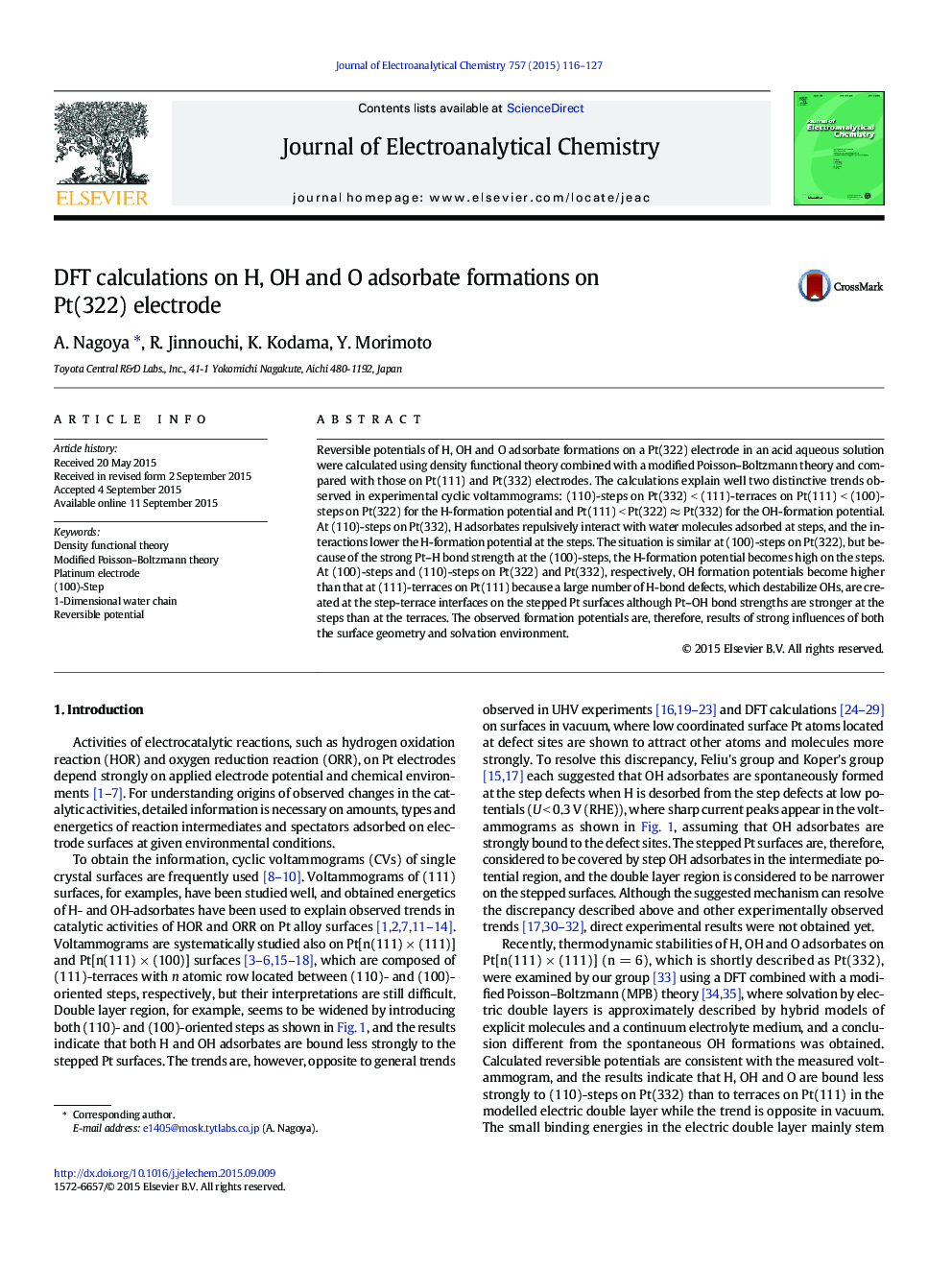| Article ID | Journal | Published Year | Pages | File Type |
|---|---|---|---|---|
| 218211 | Journal of Electroanalytical Chemistry | 2015 | 12 Pages |
•We examine DFT-MPB calculations on H, OH and O adsorbate formations on Pt(322), Pt(332) and Pt(111).•Both (100)-steps and (110)-steps are fully covered by 1-dimensional water chains.•The 1-dimensional water chains destabilize H, OH and O adsorbates.•The double layer region is predicted to be wider on Pt(322) and Pt(332) than on Pt(111).
Reversible potentials of H, OH and O adsorbate formations on a Pt(322) electrode in an acid aqueous solution were calculated using density functional theory combined with a modified Poisson–Boltzmann theory and compared with those on Pt(111) and Pt(332) electrodes. The calculations explain well two distinctive trends observed in experimental cyclic voltammograms: (110)-steps on Pt(332) < (111)-terraces on Pt(111) < (100)-steps on Pt(322) for the H-formation potential and Pt(111) < Pt(322) ≈ Pt(332) for the OH-formation potential. At (110)-steps on Pt(332), H adsorbates repulsively interact with water molecules adsorbed at steps, and the interactions lower the H-formation potential at the steps. The situation is similar at (100)-steps on Pt(322), but because of the strong Pt–H bond strength at the (100)-steps, the H-formation potential becomes high on the steps. At (100)-steps and (110)-steps on Pt(322) and Pt(332), respectively, OH formation potentials become higher than that at (111)-terraces on Pt(111) because a large number of H-bond defects, which destabilize OHs, are created at the step-terrace interfaces on the stepped Pt surfaces although Pt–OH bond strengths are stronger at the steps than at the terraces. The observed formation potentials are, therefore, results of strong influences of both the surface geometry and solvation environment.
